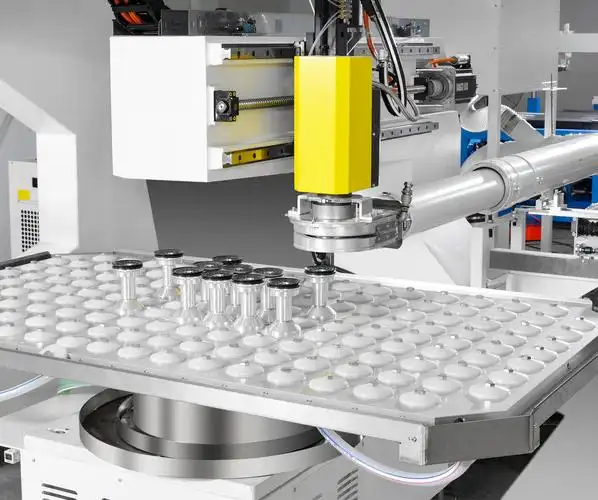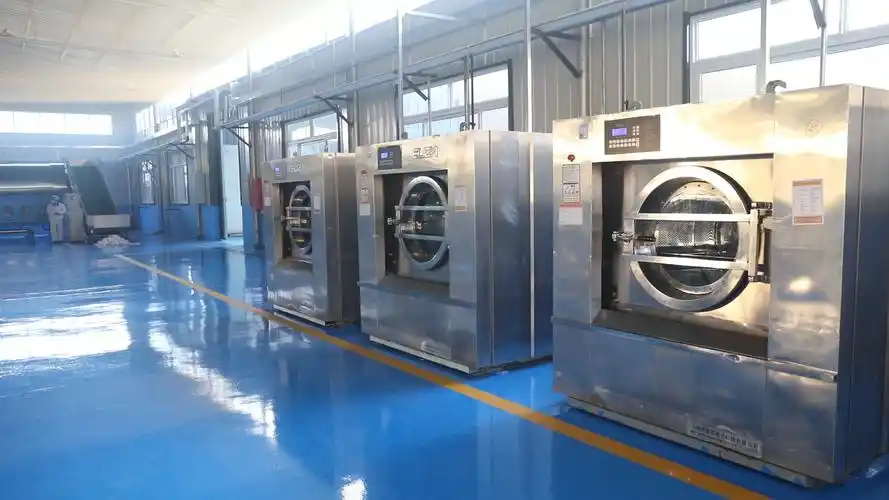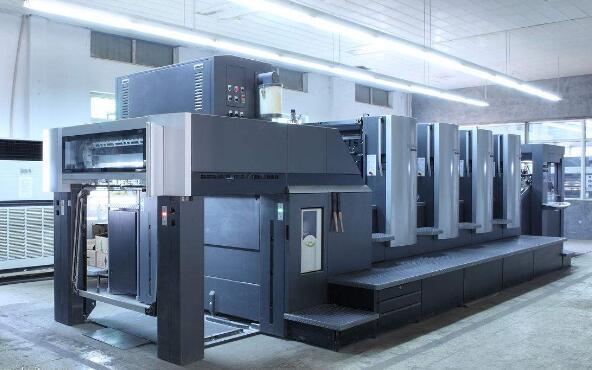
Machine tool industry
Providing solutions for industrial equipment power
Machine tool industry
Summary
Specialized motors are crucial in the machine tool industry, as their performance directly impacts the machining accuracy, efficiency, stability, and reliability of machine tools. Depending on the type of machine tool (such as lathes, milling machines, grinding machines, machining centers, etc.) and processing requirements, specialized motors need to meet characteristics such as high speed, high torque, precise control, and resistance to load fluctuations. The following explains this from the perspectives of core application scenarios, motor types, and technical characteristics:
I. Spindle Drive Motor
Function : Directly drives the machine tool spindle, realizing the main movements such as cutting and grinding, and is the core source of power for the machine tool.
1. AC Asynchronous Motor (Induction Motor)
- Application Scenarios : Spindle drive for small and medium-sized machine tools such as ordinary lathes, milling machines, and drilling machines.
- Technical Characteristics :
- Simple Structure : No brushes or commutators, low maintenance cost, suitable for harsh processing environments (such as dust and splashing cutting fluid).
- Wide Speed Range : Constant torque or constant power speed regulation is achieved through a frequency converter to meet the needs of rough machining (high torque) and fine machining (high speed).
- Power Range : Common power is 1.5~30kW, and the speed can reach 3000~6000r/min.
- Typical Case : The spindle motor of an ordinary horizontal lathe, used to provide stable torque during metal cutting.
2. Permanent Magnet Synchronous Motor (PMSM)
- Application Scenarios : Spindle drive for high-precision machining centers, grinding machines, and CNC lathes (especially in high-speed cutting scenarios).
- Technical Characteristics :
- High Power Density : The power is more than 30% higher than that of an asynchronous motor with the same volume, suitable for high-speed spindles (speed can reach 10000~40000r/min).
- High Efficiency : Rare earth permanent magnet materials make the efficiency reach more than 95%, and the energy-saving effect is significant (energy consumption is reduced by 20% during continuous processing of high-speed grinding machines).
- Precise Control : Closed-loop control is achieved with an encoder, with fast dynamic response, suitable for precision machining (such as surface accuracy control of mold milling).
- Typical Case : The electric spindle of a five-axis machining center integrates a permanent magnet synchronous motor to achieve high-speed milling of aluminum alloy parts.
3. Electric Spindle (Integrated Motor)
- Application Scenarios : High-speed machining centers, precision grinding machines (such as ceramic bearing grinding machines, optical lens grinding machines).
- Technical Characteristics :
- Integrated Motor and Spindle Design : Eliminates transmission gears or belts, directly driving the spindle, reducing transmission errors (accuracy can reach the μm level).
- High Rigidity and Low Vibration : Using oil-air lubrication or magnetic bearings, it supports stable operation at high speeds (vibration value <1.5mm/s).
- Power Range : 5~100kW, some ultra-high-speed electric spindles can reach 100,000 r/min (such as titanium alloy cutting in the aerospace field).
- Typical Case : The electric spindle of a precision optical grinding machine drives the grinding wheel to achieve nanometer-level surface roughness processing.
II. Feed Axis Drive Motor
Function : Drives the machine tool table, tool holder, and other feed mechanisms to achieve precise positioning of linear or rotary motion.
1. Servo Motor
- Application Scenarios : X/Y/Z axis feed drive for CNC milling machines, machining centers, and lathes.
- Technical Characteristics :
- Closed-Loop Control : With a grating ruler or encoder, the positioning accuracy can reach ±0.001mm (such as hole spacing processing of a precision boring machine).
- High Response Speed : Acceleration can reach 1~5g, meeting the requirements of fast feed (speed 20~60m/min) and high-speed interpolation (such as complex contour processing).
- Low Inertia Design : The rotor uses aluminum alloy or carbon fiber materials to reduce inertial impact during start/stop.
- Typical Case : The feed axis servo motor of a five-axis linkage machining center cooperates to complete the linkage interpolation of complex surfaces.
2. Stepper Motor
- Application Scenarios : Feed drive for economical CNC machine tools, small woodworking machine tools, and 3D printing machine tools.
- Technical Characteristics :
- Open-Loop Control : No feedback device is required, low cost, suitable for scenarios with moderate accuracy requirements (positioning accuracy ±0.01mm).
- Low Speed, High Torque : Suitable for short-distance, high-frequency pulse feeding (such as drill bit positioning of a PCB drilling machine).
- Step Angle Subdivision Technology : Through driver subdivision, the minimum movement amount can be reduced to the micrometer level (such as 0.002mm/pulse).
- Typical Case : X/Y axis stepper motor of a small CNC milling machine, used for contour processing of simple parts.
III. Special Processing Machine Tool Dedicated Motors
1. Electrical Discharge Machining (EDM) Motor
- Application Scenarios : Electrode drive for electrical discharge machining and wire cutting machine tools.
- Technical Characteristics :
- Low-Speed Stability : Maintain constant torque in the range of 0.1~10r/min to ensure the stability of micro-feed of the electrode.
- Anti-Arc Interference Using a shielded structure and corona-resistant insulation materials to prevent electrical sparks from interfering with motor control signals.
- Typical Case The servo motor drives the electrode of the precision electric discharge machining machine to process the complex cavity of the cemented carbide mold.
2. Grinding Machine Dedicated Motor
- Application Scenarios Driving the grinding wheel of external cylindrical grinders, surface grinders, and centerless grinders.
- Technical Characteristics :
- Constant Power Characteristics Maintain stable power during high-speed grinding (e.g., when the grinding wheel speed is 2000~6000r/min, the torque automatically decreases as the speed increases).
- High Balance The motor rotor dynamic balance grade reaches G1.0, avoiding vibration affecting surface accuracy during grinding (e.g., mirror grinding of bearing rings).
- Typical Case The permanent magnet synchronous motor drives the grinding wheel of a high-precision external cylindrical grinder to process shaft parts for aero-engines.
3. Spindle Cooling Motor
- Application Scenarios Spindle motor cooling system for high-power machine tools (e.g., water-cooled or oil-cooled circulation pump drive).
- Technical Characteristics :
- Resistant to Liquid Media Using stainless steel impellers and sealing structures to prevent cutting fluid or cooling oil leakage from damaging the motor.
- Variable Frequency Speed Control Adjust the cooling flow rate in real time according to the spindle temperature, saving energy and avoiding thermal deformation caused by excessive cooling.
IV. Technical Development Trends of Machine Tool Motors
- High Speed and High Precision :
- The spindle speed breaks through 100,000 r/min, and combined with magnetic bearing to achieve "zero-contact" drive, improving the efficiency of precision machining.
- Intelligent and Networked :
- Built-in temperature, vibration sensors and IoT modules, real-time monitoring of motor status (such as overload warning, wear prediction), supporting remote maintenance.
- Energy Saving and Environmental Protection :
- Popularization of IE4/IE5 high-efficiency motors, combined with energy recovery technology (e.g., converting kinetic energy into electrical energy and feeding it back to the grid during braking).
- Popularization of Direct Drive Technology :
- The linear motor directly drives the feed axis (eliminating the screw-nut mechanism), eliminating transmission clearance, making nano-level precision processing possible (e.g., semiconductor wafer cutting machine tools).
Summary
Dedicated motors are the cornerstone of machine tools achieving "high precision, high efficiency, and high reliability" processing. From asynchronous motors for ordinary machine tools to permanent magnet synchronous spindles for high-end machine tools, innovations in motor technology directly drive the machine tool industry towards precision, intelligence, and green development. In the future, with the deep integration of numerical control systems and motor control technology, machine tool motors will further break through the limits of speed, precision, and energy efficiency, supporting the processing needs of key fields such as aerospace, precision molds, and semiconductors.








